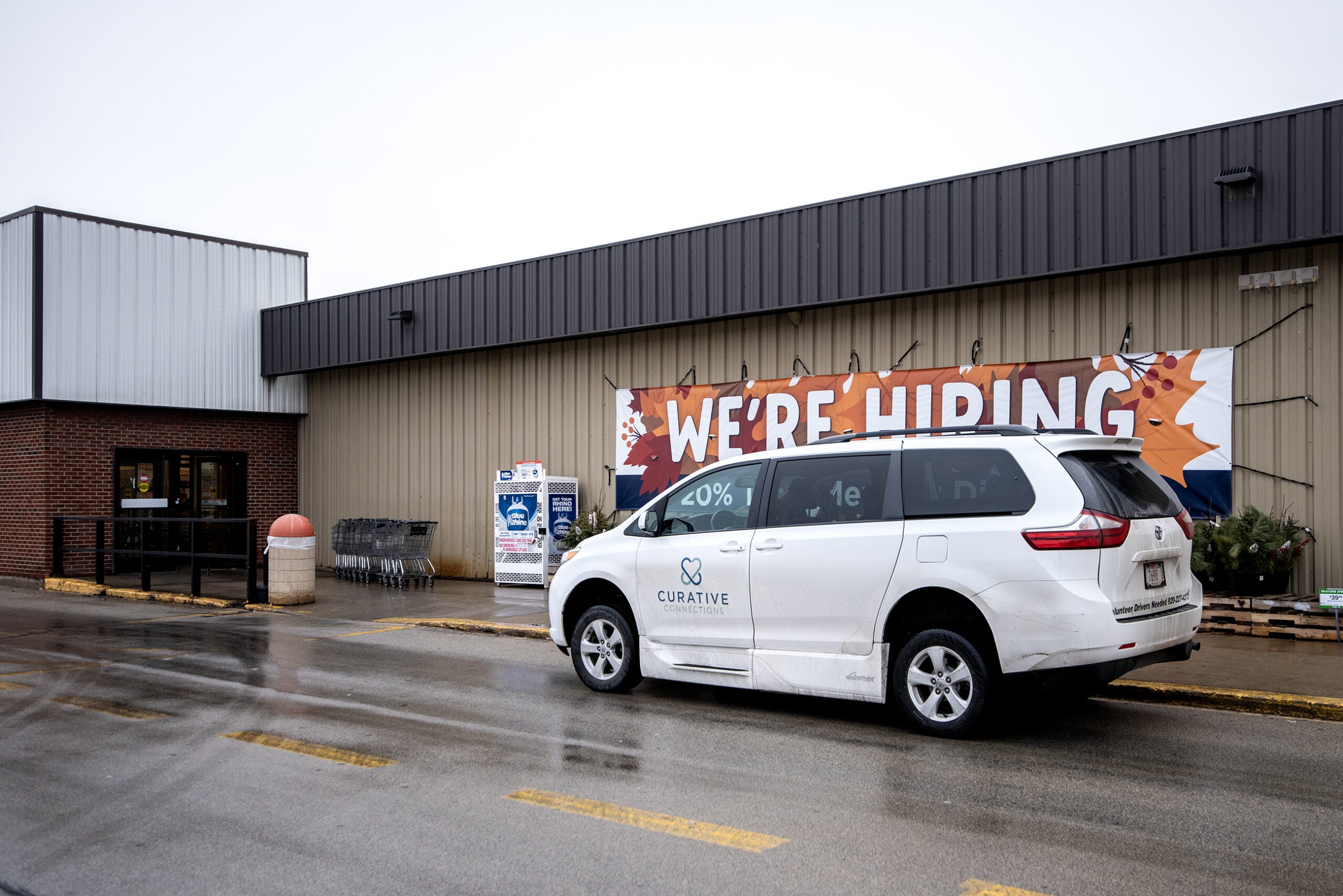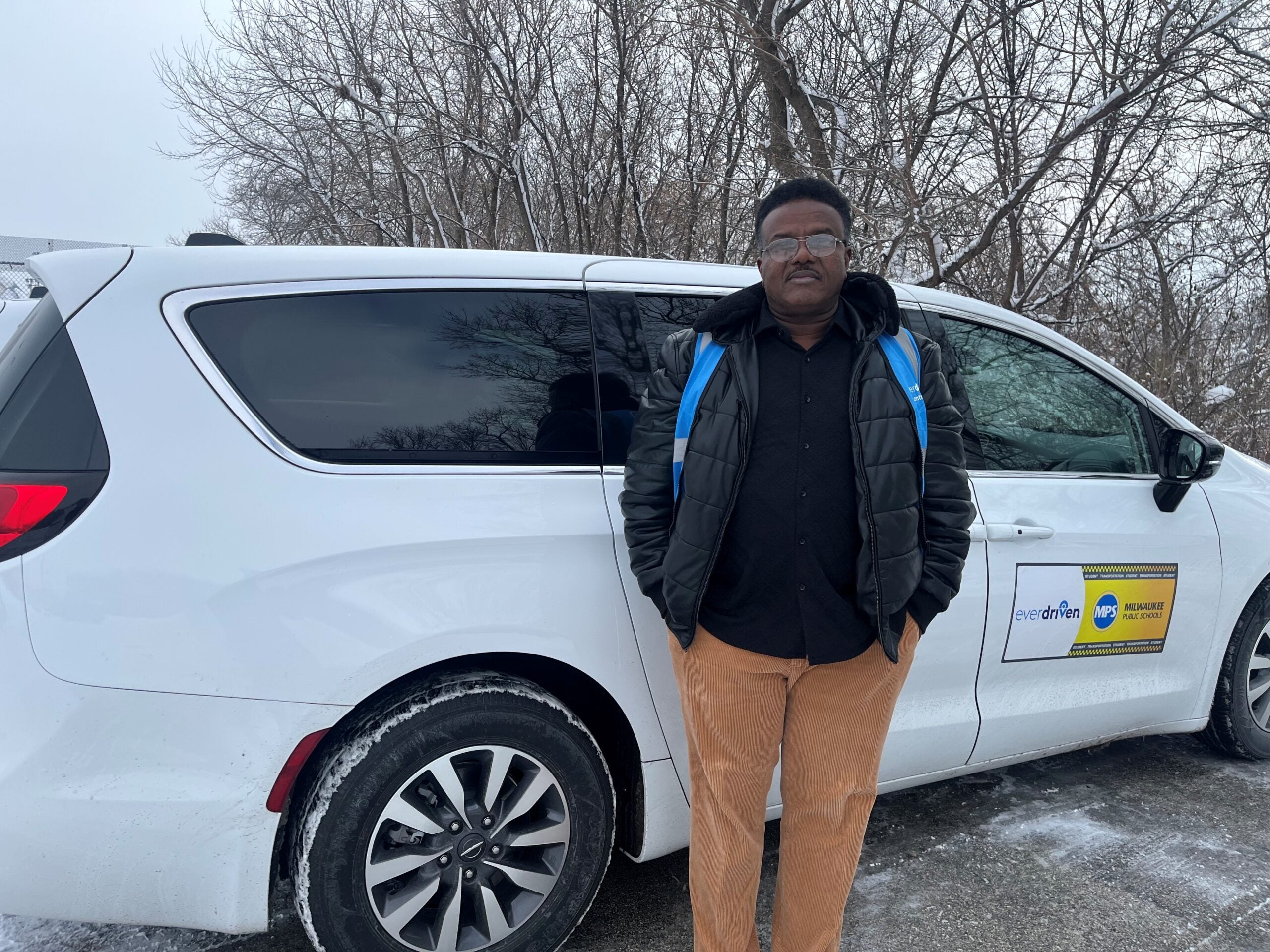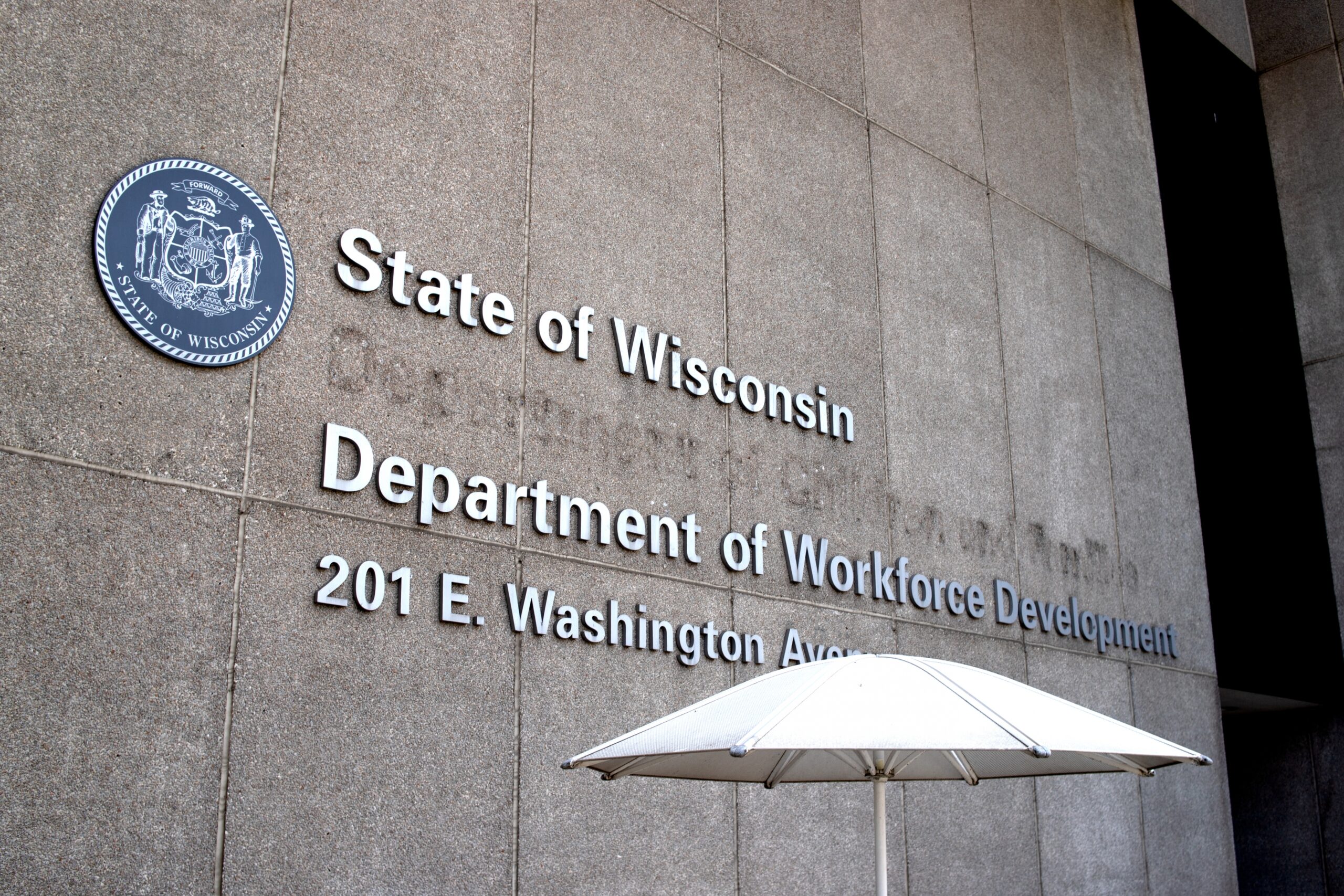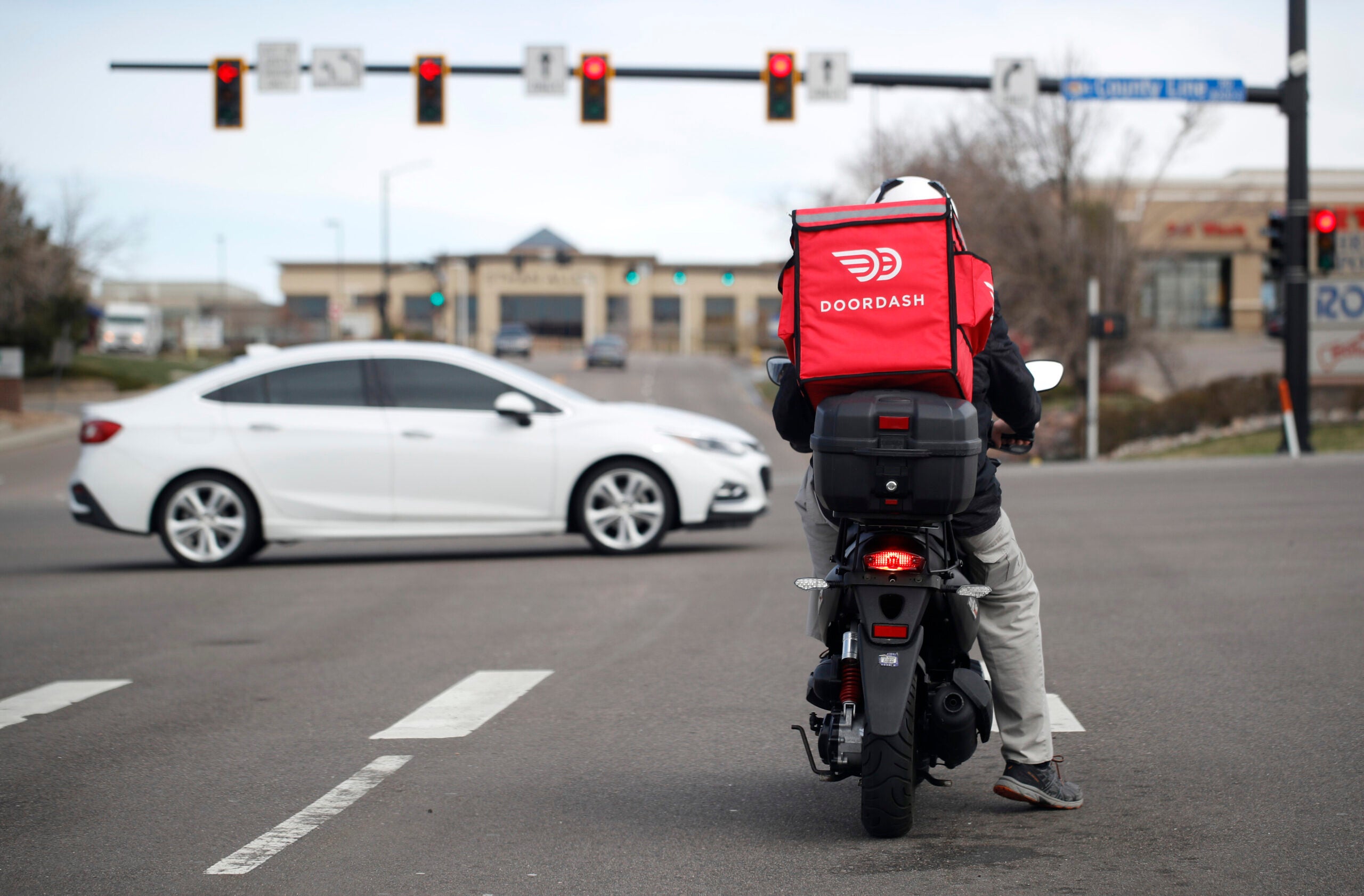Ashley Duquaine has just gotten off her shift and is en route to a bowling alley. At 34, she’s one of the younger folks on Steve Maricque’s route on an October day. Maricque is a volunteer driver for Curative Connections, a Green Bay nonprofit that provides transportation for the elderly and people with disabilities.
Duquaine is a regular. She uses the service four days each week, mostly to get to work. A disability prevents her from driving, and she doesn’t know of other options to help her get around town.
“I don’t know how to drive,” she says. Her mom teaches at a local school and can’t drive her during the work day. “So this is a big help for me. I thank them every time, and I appreciate them a lot.”
News with a little more humanity
WPR’s “Wisconsin Today” newsletter keeps you connected to the state you love without feeling overwhelmed. No paywall. No agenda. No corporate filter.
While Duquaine has found reliable transportation, many other Wisconsinites with disabilities lack options.
In 2018, 59 percent of respondents to a Survival Coalition of Wisconsin Disability Organizations survey reported that a lack of suitable public transportation limited their ability to find and keep a job.
“For those of us that cannot drive, we lose our independence,” says Denise Jess, executive director of the Wisconsin Council of the Blind and Visually Impaired and a co-chair of the Wisconsin Department of Transportation’s Non-Driver Advisory Committee. “It places limitations on what kinds of jobs we apply for.”
Jess, who is legally blind, has experienced such barriers as one of the 31 percent of Wisconsinites (including children) who don’t drive. Driving barriers for adults limit the size and flexibility of the state’s workforce. That doesn’t help employers who face a long-term labor crunch largely shaped by Wisconsin’s aging demographics and a lack of migration.
“We have a worker quantity shortage,” says Amy Pechacek, secretary-designee of the Wisconsin Department of Workforce Development, which administers several programs to assist people with disabilities looking for work.
“With a tight labor market, we really need to make sure that all of those folks who are facing some type of resource barrier get the wraparound services they need, so that we can engage everyone in the labor force who wants to be working,” Pechacek says.
While the Americans with Disabilities Act has made public transportation more accessible over the past three decades, significant gaps remain. Wisconsin’s major public transportation systems have shrunk coverage due to declining ridership and revenue. As a result, fewer people, including those with disabilities, live in areas where they can easily catch a bus.
“Our state has really been built with the driver and the car in mind,” Jess says. “This is particularly true in rural areas where the transportation options are much more scarce.”
Ride-sharing services like Uber often fill needs in communities that lack accessible public transportation. But ride-sharing services are growing more expensive, and the companies have argued that their cars — which are personal vehicles, instead of company-owned taxi cabs — need not comply with federal disability law.
And earlier this summer, Uber settled a lawsuit with the U.S. Department of Justice for overcharging folks with disabilities. The company promised “several million dollars in compensation” to more than 65,000 Uber users who were charged discriminatory wait time fees, according to the Department of Justice.
Uber has unveiled new accessibility features in recent years, including its Uber WAV (Wheelchair-Accessible Vehicle) service designed for those with mobility disabilities. While imperfect, Jess says, rideshare companies could help meet the demands of workers with disabilities — provided any public-private partnerships are closely regulated.
The state’s Non-Driver Advisory Committee, established in 2020, is examining how public transportation systems can better serve people with disabilities. Dramatic overhauls are unlikely to happen soon, but listening to people with disabilities will help, Jess says.
“Creating opportunities for non-drivers to be at the table in the decision making processes at the local and state level is vital,” she says.







